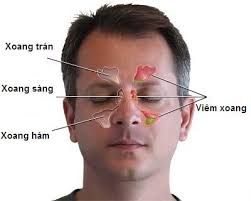Gastric-duodenal ulcer is a common gastrointestinal disease, the result of an imbalance between ulcerative factors (hydrochloric acid solution, pepsin, helicobacter pylori) and protective factors in the liner of the digestive, gastrointestinal mucosa. Thick (mucus, bicarbonate, prostaglandin).
 H. spirochetes play an important role in the risk of ulceration: about 95% of duodenal ulcers and 70-80% of gastric ulcers have this bacterium. They cause serious gastritis and increase acid solution secretion. Elimination of They would. pylori results in fast onset of ulceration and a marked decrease in repeat rates.
H. spirochetes play an important role in the risk of ulceration: about 95% of duodenal ulcers and 70-80% of gastric ulcers have this bacterium. They cause serious gastritis and increase acid solution secretion. Elimination of They would. pylori results in fast onset of ulceration and a marked decrease in repeat rates.
The goal of treating peptic ulcers is:
– Anti-ulcer factors:
. Antacids: Acidic acid in the stomach (magnesium hydroxide, light weight aluminum hydroxide… )
. Drugs that reduce acid secretion and pepsin: antihistamines H 2 and proton pump blockers.
. H. pylori eradication: drugs, bismuth.
– Enhanced security factor: sucralfate, bismuth, misoprostol.
Dangerous gastric acid release of HCl into the stomach is because of histamine, acetylcholine and gastrin via They would + / K & – ATPase (proton pump).
Prostaglandins play an important role in back managing mechanisms: PGE 2 adenylcyclase inhibitors reduce AMPv, antagonize histamine and inhibit gastrin release. PGI2 stimulates epithelial cells of the intestinal, digestive, gastrointestinal mucosa, which boosts the release of mucus, bicarbonate to protect the mucosa. Nonsteroidal anti-inflammatory drugs inhibit prostaglandin synthesis, can cause ulcer and gastrointestinal bleeding.
Antacids
General characteristics
Antacids are drugs that neutralize acidity in the gastric drink, raising the pH of the stomach to practically 4, facilitating the reconstruction of mucosa. As the pH of the tummy increases, pepsin’s activity reduces (pepsin is inactivated in pH greater than 4).
Antacids have a quick but short-acting antidiarrheal agent, which is merely a symptom-free, pain-killer.
If the abdomen is empty, the antacids escape from the abdomen after 30 minutes, when the food is about 2 hours.
One of the most commonly used antacids are aluminum and magnesium preparations, that have an antacid effect set up, are nearly ineffective in the blood and therefore have little effect on the body. Antacids containing magnesium (mg) are laxative, whereas light weight aluminum containing drugs can cause constipation. Therefore, antacid formulations containing both magnesium and aluminum salts may reduce the undesirable effects on the intestines of these two drugs. If normal kidney function, there is very little likelihood of magnesium and aluminum piling up.
Natribicarbonate has a powerful neutralizing effect on acid, but it is almost no longer used as an antacid, as it is absorbed into the bloodstream, triggering undesirable results on the body and acid secretion. Acid after stopping the drug).
The best antacid is after meals 1-3 hours and before going to foundation, 3-4 times (or more) in a dieu tri viem loet da day. Water compositions are more effective than solids but have shorter shelf life.
Simply by increasing the pH of the stomach, acidic drugs interfere with the ingestion of several other drugs, should take these drugs away from antacids no less than 2 hours.
A few antacid blend medications with simeticon (anti-foaming agent) to relieve or minimize the symptoms of hiccup.
Magnesium (mg) hydroxide – Mg (OH) 2
Effects and components
In the stomach, magnesium (mg) hydroxide reacts quickly with hydrochloric acid:
Mg (OH) 2 + 2HCl – MgCl2 + 2H2O
In the small intestine, Mg2 + acts on the phosphate (PO43-) and carbonate (CO32-) ions to form very little soluble or insoluble salts, thus staying away from base absorption, avoiding blood vessels base even after long use.
Other salts of magnesium may be used, such as magnesium carbonate, magnesium trisilicate.
Stage
Improved acid secretion (pain, belly pain, indigestion, heartburn, heartburn) in people with ulcer or without gastric or duodenal ulcer.
– Gastroesophageal reflux.
Contraindications
Cigarette private, severe renal impairment, young kids (especially dehydration and renal failure).
Unwanted effects
Vomiting, vomiting, belly pain, diarrhea, hyperkalaemia (in patients with renal failure or high doses, prolonged).
Drug relationships
Antacid drugs with the same antacid: tetracycline, digoxin, indomethacin, iron salts, isoniazid, benzodiazepine, ranitid
Increased medicine effects by reducing the excretion of the same antacid drug: amphetamine, quinidine.
Dosage, usage
Adults: Every dose 300-600 mg, up to 1g, 3-4 days and nights. Chew medicine before taking.
Aluminum hydroxide – Ing (OH) 3
Effects and mechanisms
In the abdomen, aluminum hydroxide reacts with hydrochloric acid:
slow
‘s (OH) 3 + 3HCl – AlCl 3 & 3H 2 O
Lightweight aluminum hydroxide has a weakened acid neutralizing effect so they must do not cause acidosis reaction.
Found in the intestine, aluminum combines with food phosphate, absurde aluminum phosphate, almost unabsorbed, excreted in faeces, would not cause basal blood. Mainly because phosphate is eliminated, the entire body
Must mobilize phosphate from the bones out, easy to cause osteoporosis. As a result, it is important to eat high degrees of phosphate and protein.
Level
Just like magnesium hydroxide. Hypercholesterolemia (rarely used